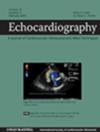Clinical Study of Post-Chemotherapy Cardiotoxicity in Breast Cancer Patients Based on Ultrasound Radiomics
Abstract
Purpose
The aim of this study is to develop and validate a combined model based on ultrasound radiomics to detect cardiotoxicity after chemotherapy in patients with breast cancer.
Methods
In this paper, we included 208 patients with breast cancer diagnosed pathologically and after chemotherapy, of whom had high-quality echocardiographic images; among them, 105 cases experienced cardiotoxicity, while 103 cases did not, which were divided into a training set and a validation set using a wholly randomized method according to a ratio of 7:3. Then, the left ventricular myocardium in the parasternal long-axis view of echocardiography was manually traced, the myocardial features of each image were extracted and filtered, and then a radiomics model was established; lastly, we plotted the receiver operating characteristic (ROC) curve; calculated the area under the curve (AUC); and assessed the diagnostic performance of the model.
Results
The AUC of the combined model in the training set was 0.88 (95%CI,0.828–0.936), which was higher than the clinical model at 0.73 (95%CI,0.646–0.807) and the radiomics model at 0.84 (95%CI,0.774–0.903). In the validation set, the AUC of the combined model was 0.87 (95%CI,0.783–0.959), which was higher than the clinical model at 0.75 (95%CI,0.631–0.877) and the radiomics model at 0.81 (95%CI,0.698–0.917). The combined model of the training group and the validation group had statistical significance compared to both the clinical model and the radiomics model (Z = −4.066, p < 0.001; Z = −1.977, p = 0.048); (Z = −1.986, p = 0.047; Z = −2.142, p = 0.032). Meanwhile, the results of Hosmer–Lemeshow goodness-of-fit test were favorable (the training group: X2 = 6.776, p = 0.561; the validation group: X2 = 11.949, p = 0.154).
Conclusion
The combined model based on radiomics is an effective tool for the early diagnosis of cardiac toxicity in breast cancer patients after chemotherapy. It helps to detect cardiotoxicity of breast cancer patients during chemotherapy.

 求助内容:
求助内容: 应助结果提醒方式:
应助结果提醒方式:


